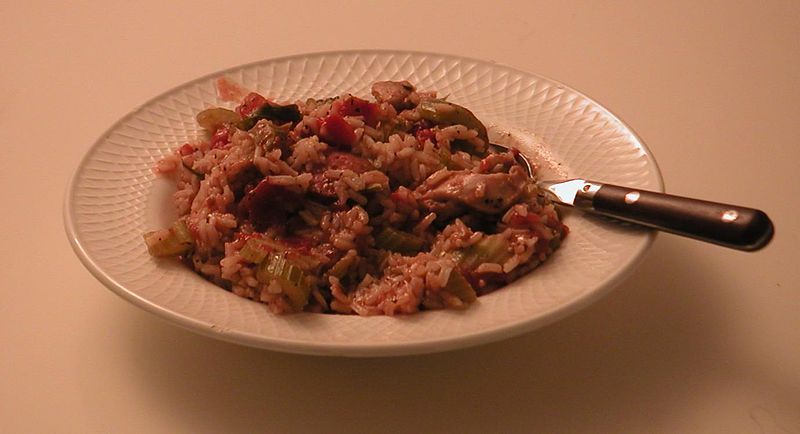“Jambalaya, and a crawfish pie and filé gumbo … son of a gun we’ll have big fun on the bayou.” Hank Williams’ early 1950s smash hit—an ode to Louisiana living—was about the closest thing most anyone outside the Deep South knew or heard of Cajun culture and food at that time. This song introduced us to some dishes with strange, new names and simple pleasures characteristic of life on the bayou.
Jump ahead 35 years and Louisiana Chef Paul Prudhomme blows the doors off Cajun-Creole cuisine to international attention with the publication of his first cookbook, Paul Prudhomme’s Louisiana Kitchen.
In addition to Prudhomme’s interpretations of classic Cajun-Creole cookery, his meteoric rise to fame was fueled in large part due to his recipe for blackened redfish—an incendiary treatment of a local fish with extreme heat and flame. It was a game-changer of a recipe if there ever was one.
The popularity of the recipe and its variations was akin to a spreading wildfire. It inspired copycat versions on restaurant menus and in home kitchens everywhere using different kinds of meats, poultry, and seafood. The demand for redfish became so strong in subsequent years that environmental controls had to be developed to stop over-fishing and possible extinction of this snapper-related fish.
But aside from the fame and notoriety associated with that particular recipe, at its heart, Prudhomme’s book is a culinary homage to family, tradition, innovation, great food, good times, and indelible memories. And Hank Williams’ lyrics came to life bringing rural Cajun cuisine and its urban counterpart, Creole cuisine, to hungry fans just about everywhere you turned.
Country Cousins
Cajuns trace their lineage to France and the religious exiles who made their way in the early 18th century to Maritime Canada, specifically the Acadian region. While these French Acadians migrated from the area, many traveled as far as the Deep South living off the land in bayou country.
The word Cajun is, in actuality, a slurred contraction of the name Acadian.
Two dishes most prominently representative of Cajun-Creole cooking are gumbo and jambalaya. And while they start out with very similar processes, they take divergent paths when it comes to the treatment of rice. For example, both recipes begin with the cooking of the Cajun “holy trinity,” diced onions, celery, and bell pepper, a variation on the French mirepoix that uses diced carrots in the mix instead of the bell pepper. When serving gumbo, rice is cooked separately and the gumbo is ladled over the rice. With jambalaya, the rice and other ingredients are all simmered together.
 Shrimp Gumbo over Rice — Photo credit: Wikipedia
Shrimp Gumbo over Rice — Photo credit: Wikipedia
Gumbo Origins
Dating back to the early 18th century, gumbo went on to become the state cuisine of Louisiana. It is truly a melting pot of influences from rural French, Spanish, German, African, and Native American populations who settled in southern Louisiana. The name is most likely a derivative of the several different, yet similar, terms of several West African tribes’ word for okra, which defines a particular style of gumbo.
Another possibility is that it is the Native American Choctaw tribe’s word kombo for ground sassafras leaves, also known as filé powder, which defines another style of gumbo. Sassafras is also the original source of root beer.
The primary types of gumbo are defined by what is used to thicken the highly seasoned and spicy mixture. And everyone claims to have the best gumbo recipe, but rarely are two ever the same.
Chopped okra or filé powder are often added toward the end of the gumbo cooking to thicken it. Adding either too soon will cause the gumbo to thicken too much and make it stringy.
Some gumbos begin with the French influence of a roux, a mixture of flour and some form of fat. Depending on the length of cooking, roux can range from wheat color to a deep brown or even black. The deeper the color, the more pronounced the nutty flavor and aroma.
Traditionally, gumbo is served by ladling it into a bowl and then adding a mound of cooked rice in the middle of the plate or bowl.
Jambalaya: 3 Steps to a One-Pot Wonder
Jambalaya, on the other hand, is primarily a rice dish incorporating meat, poultry, seafood, and vegetables in various combinations, which in the scheme of things, is a not-too-distant rendition of such similar dishes as Spanish paella, Asian fried rice, or Indian pilao.
In fact some speculate that the Creole version of jambalaya is a direct New World replacement for Spanish paella. The main difference, however, is the use of tomatoes in jambalaya instead of saffron to tinge and flavor the rice. Cajun jambalaya omits the tomatoes.
The first cited reference to the word jambalaya comes from a Provençal poem published in 1837. Other claims for the origin of the name conflict and often refer to the French word for ham, jambon. Those arguments are largely discounted because ham is not a primary ingredient in jambalaya.
Cooking jambalaya begins by cooking the meats.
Step 2: cook the holy trinity and other vegetables.
Finally, step 3, rice and stock are added to the same pot and allowed to simmer for up to an hour before serving.
Are you a jambalaya or gumbo aficionado? What’s your favorite recipe? Or do you create your own? What are your favorite variations?



Leave Your Response